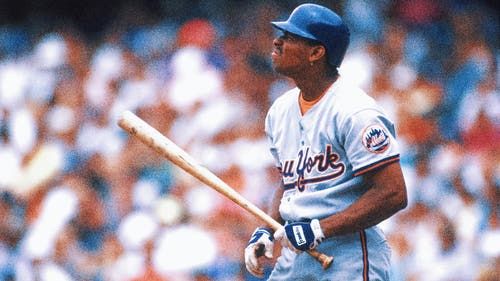
A timeline of MLB's drug-testing rules
Aug. 30, 2002 - Players and owners announce a collective bargaining agreement that includes a joint drug program for the first time since October 1985. The deal calls for a survey urine test for banned steroids in 2003 and 2004, and if more than 5 percent of tests are positive in a year, for testing with penalties to start the following year and continue until less than 2.5 percent test positive in two consecutive years combined.
Nov. 13, 2003 - MLB says between 5 and 7 percent of 1,438 anonymous tests were positive for steroids, triggering the start of testing with penalties in 2004. A first positive test results in treatment and a second in a 15-day suspension without pay or fine of up to $10,000. Penalties increase to a 25-day suspension or fine of up to $25,000 for a third positive test, a 50-day suspension or fine of up to $50,000 for a fourth and a one-year suspension or fine of up to $100,000 for a fifth.
Jan. 13, 2005 - Under pressure from Congress, players and owners announce a new drug agreement in which first offenses result in a 10-day suspension, second violations in a 30-day ban, third in a 60-day penalty and a fourth in a one-year ban. Fifth violations are subject to discipline determined by the commissioner.
Nov. 15, 2005 - Still under pressure from Congress, players and owners announce a new drug agreement in which first testing offenses result in a 50-game suspension, second in 100-game bans and third in lifetime suspensions. Many stimulants are banned for the 2006 season. The deal is along the lines of what Baseball Commissioner Bud Selig had proposed on April 30.
April 22, 2008 - Following the Mitchell Report on drugs in baseball, players and owners adopt George Mitchell's recommendations that the drug program's Independent Program Administrator be appointed for a multiyear term, be removed only in narrow circumstances and issue annual public reports. Random urine testing is increased.
Nov. 22, 2011 - Players and owners announce an agreement to have blood testing for human growth hormone during spring training in 2012.
June 7, 2012 - Players and owners announce they have agreed to add HGH blood testing during spring training, during the offseason and for reasonable cause. Random urine testing is increased, players suspended before the All-Star game become ineligible for election or selection to the game and collection rules are modified following the successful grievance that overturned the suspension of Milwaukee's Ryan Braun.
Jan. 10, 2013 - Players and owners announce they have agreed to HGH blood testing throughout the regular season and to have the World Anti-Doping Agency laboratory in Laval, Quebec, keep records of each player, including his baseline ratio of testosterone to epitestosterone. The lab will conduct Carbon Isotope Ratio Mass Spectrometry (IRMS) tests of any urine specimens that ''vary materially.''
March 28, 2014 - Players and owners announce penalties will increase to 80 games for a first testing violation and to 162 for a second, and a season-long suspension will result in a complete loss of that year's salary, rather than 162-183rds. A player who serves a PED suspension during the season will be ineligible for that year's postseason. For certain substances that cause positive tests, an arbitrator will have the discretion to reduce discipline if the player proves the use was not intended to enhance performance. In-season random urine tests, in addition to the minimum two for each player will increase from 1,400 to 3,200. There will be 400 random blood collections used to detect human growth hormone in addition to the mandatory one for each player during spring training. At least one IRMS test will be performed on a specimen from each player. Didehydroepiandrosterone (DHEA) is added to the banned list.










